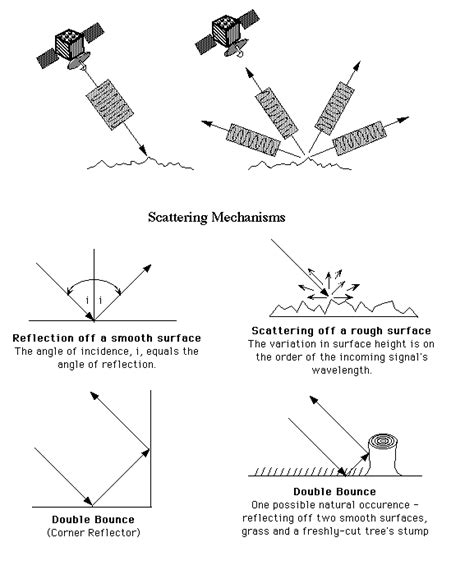The Need for Advanced Radar Systems
Australia’s unique geography and strategic position in the Indo-Pacific region present distinct challenges for its defense forces. With a vast coastline spanning over 25,000 kilometers and a land area of approximately 7.7 million square kilometers, Australia requires sophisticated radar systems to monitor its territories effectively. The country’s proximity to potential adversaries and the increasing prevalence of asymmetric threats, such as terrorism and cyberattacks, further underscore the need for robust radar capabilities.
Traditional radar systems, while still valuable, have limitations in terms of range, resolution, and the ability to detect stealth targets. To address these shortcomings, Australia is investing in next-generation radar technologies that leverage advances in materials science, signal processing, and artificial intelligence. These empowered radar systems offer unprecedented levels of performance and flexibility, enabling Australia to stay ahead of evolving threats.
Key Radar Technologies Being Developed
Australia is at the forefront of radar innovation, with several groundbreaking technologies currently under development or already in deployment. These include:
1. Active Electronically Scanned Array (AESA) Radar
AESA radar systems represent a significant leap forward in radar technology. Unlike traditional mechanically scanned radars, AESA radars use an array of small, solid-state transmit/receive modules that can be independently controlled. This allows for rapid beam steering, improved target tracking, and enhanced jamming resistance. Australia is incorporating AESA radars into its military platforms, such as the F-35 Lightning II fighter aircraft and the future frigates of the Royal Australian Navy.
2. Over-the-Horizon Radar (OTHR)
Australia’s vast coastline presents a unique challenge for maritime surveillance. To address this, Australia has developed Over-the-Horizon Radar (OTHR) systems, which can detect targets beyond the range of conventional radars. OTHR systems, such as the Jindalee Operational Radar Network (JORN), use high-frequency radio waves that reflect off the ionosphere to detect targets at distances exceeding 3,000 kilometers. This technology enables Australia to monitor its vast maritime approaches and detect potential threats at long ranges.
3. Passive Radar
Passive radar systems, also known as passive coherent location (PCL) radars, detect targets by analyzing reflections from existing electromagnetic sources, such as television and radio broadcasts. By not emitting their own signals, passive radars remain undetectable to adversaries, making them valuable for covert surveillance operations. Australia is exploring the use of passive radar technology for applications such as border protection, counter-terrorism, and maritime domain awareness.
4. Quantum Radar
Quantum radar is an emerging technology that exploits the principles of quantum entanglement to detect stealth targets and overcome jamming. By using entangled photons, quantum radar systems can achieve higher sensitivity and resolution compared to traditional radars. Australia is investing in quantum radar research through initiatives such as the Defence Science and Technology Group’s (DSTG) Quantum Technologies Program, which aims to develop practical quantum radar systems for defense applications.
| Radar Technology | Key Features | Applications |
|---|---|---|
| AESA Radar | Rapid beam steering, improved target tracking, enhanced jamming resistance | F-35 Lightning II fighter aircraft, future frigates of the Royal Australian Navy |
| Over-the-Horizon Radar (OTHR) | Detection of targets beyond the range of conventional radars, maritime surveillance | Jindalee Operational Radar Network (JORN) |
| Passive Radar | Covert surveillance, undetectable to adversaries | Border protection, counter-terrorism, maritime domain awareness |
| Quantum Radar | Higher sensitivity and resolution, detection of stealth targets, overcoming jamming | Emerging technology, under research by Defence Science and Technology Group (DSTG) |

Applications of Empowered Radar Systems
The advanced radar technologies being developed and deployed by Australia have a wide range of applications across various domains, including:
1. Air Defense
AESA radars, with their improved target tracking and jamming resistance, are critical for Australia’s air defense capabilities. These radars enable early detection and engagement of aerial threats, such as hostile aircraft and missiles. The F-35 Lightning II, equipped with an advanced AESA radar, is a key asset in Australia’s air defense strategy.
2. Maritime Surveillance
Australia’s vast maritime domain requires constant monitoring to detect and respond to potential threats, such as illegal fishing, smuggling, and hostile naval activities. Over-the-Horizon Radar systems, like JORN, provide long-range surveillance capabilities, allowing Australia to maintain situational awareness across its extensive coastline. Passive radar technology can also be employed for covert maritime surveillance, enabling the detection of targets without revealing the presence of the monitoring system.
3. Border Protection
Empowered radar systems play a vital role in securing Australia’s borders against illegal immigration, drug trafficking, and other transnational crimes. High-resolution radar systems can detect and track small vessels, such as boats used by people smugglers, enabling rapid response by border protection agencies. Passive radar technology can also be used to monitor border areas covertly, providing intelligence on illegal activities without alerting perpetrators.
4. Counterterrorism
Advanced radar technologies contribute to Australia’s counterterrorism efforts by providing early warning of potential threats. High-resolution radar systems can detect and track individuals and vehicles in urban environments, enabling security forces to monitor suspicious activities and respond quickly to imminent threats. Quantum radar technology, once fully developed, could potentially detect concealed weapons and explosives, enhancing the capabilities of counterterrorism units.

Challenges and Future Developments
While Australia is making significant strides in empowering its radar technology, there are still challenges to overcome and areas for future development:
1. Integration and Interoperability
As Australia incorporates advanced radar systems into its defense infrastructure, ensuring seamless integration and interoperability between various platforms and systems becomes crucial. Developing common standards and protocols for data sharing and communication between radar systems will be essential for effective joint operations and decision-making.
2. Cybersecurity
With the increasing reliance on digital technologies in radar systems, cybersecurity becomes a critical concern. Protecting radar systems from cyber threats, such as hacking and jamming, will require robust encryption, secure communication protocols, and regular vulnerability assessments. Australia must invest in developing strong cybersecurity measures to safeguard its radar infrastructure.
3. Quantum Technology Development
While quantum radar holds immense promise, it is still an emerging technology that requires further research and development. Australia must continue to invest in quantum technology research to overcome technical challenges, such as maintaining quantum entanglement over long distances and developing practical quantum radar systems for field deployment.
4. International Collaboration
Collaborating with allies and partners in radar technology development can accelerate innovation and share the costs of research and development. Australia should actively seek opportunities for international cooperation in radar technology, such as joint research programs, technology transfer agreements, and multinational exercises to test and validate new radar systems.

Frequently Asked Questions (FAQ)
-
Q: What is AESA radar, and how does it differ from traditional radar systems?
A: AESA (Active Electronically Scanned Array) radar is an advanced radar technology that uses an array of small, solid-state transmit/receive modules that can be independently controlled. Unlike traditional mechanically scanned radars, AESA radars offer rapid beam steering, improved target tracking, and enhanced jamming resistance. -
Q: How does Over-the-Horizon Radar (OTHR) work?
A: Over-the-Horizon Radar (OTHR) systems use high-frequency radio waves that reflect off the ionosphere to detect targets beyond the range of conventional radars. By leveraging this unique propagation method, OTHR systems like Australia’s Jindalee Operational Radar Network (JORN) can detect targets at distances exceeding 3,000 kilometers. -
Q: What are the advantages of passive radar systems?
A: Passive radar systems detect targets by analyzing reflections from existing electromagnetic sources, such as television and radio broadcasts. By not emitting their own signals, passive radars remain undetectable to adversaries, making them valuable for covert surveillance operations in various domains, such as border protection and maritime domain awareness. -
Q: How can quantum radar technology enhance Australia’s defense capabilities?
A: Quantum radar technology exploits the principles of quantum entanglement to achieve higher sensitivity and resolution compared to traditional radars. By using entangled photons, quantum radar systems can potentially detect stealth targets and overcome jamming, enhancing Australia’s ability to detect and respond to advanced threats. -
Q: What are the key challenges in developing and deploying advanced radar technologies in Australia?
A: Some of the key challenges include ensuring seamless integration and interoperability between various radar platforms and systems, protecting radar infrastructure from cyber threats, further developing emerging technologies like quantum radar, and fostering international collaboration to accelerate innovation and share costs.
Conclusion
Empowering Australian radar technology is crucial for maintaining the country’s strategic advantage and ensuring its security in an increasingly complex and uncertain world. By investing in cutting-edge radar technologies, such as AESA radar, Over-the-Horizon Radar, passive radar, and quantum radar, Australia is enhancing its ability to detect, track, and respond to a wide range of threats across vast expanses of land and sea.
However, the development and deployment of these advanced radar systems also present challenges, including integration, cybersecurity, and the need for further research and development in emerging technologies like quantum radar. By addressing these challenges through targeted investments, international collaboration, and a focus on innovation, Australia can harness the full potential of its empowered radar technology to safeguard its national interests and contribute to regional stability.
As Australia continues to push the boundaries of radar technology, it is clear that these advanced systems will play an increasingly vital role in the country’s defense strategy. By staying at the forefront of radar innovation, Australia can maintain its strategic edge and ensure its security in an ever-changing world.

No responses yet